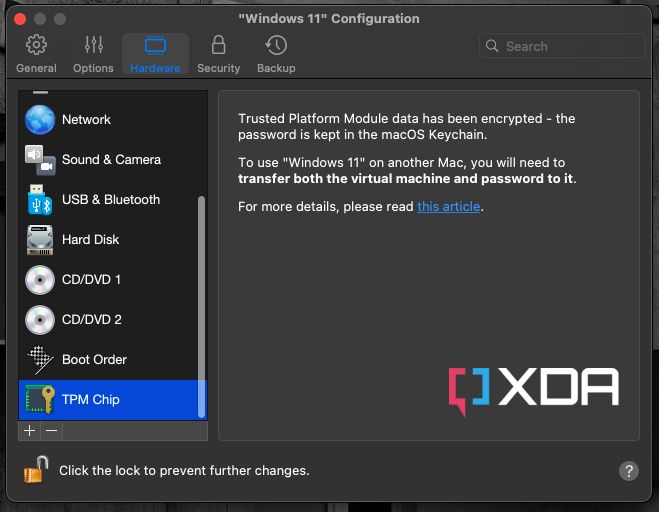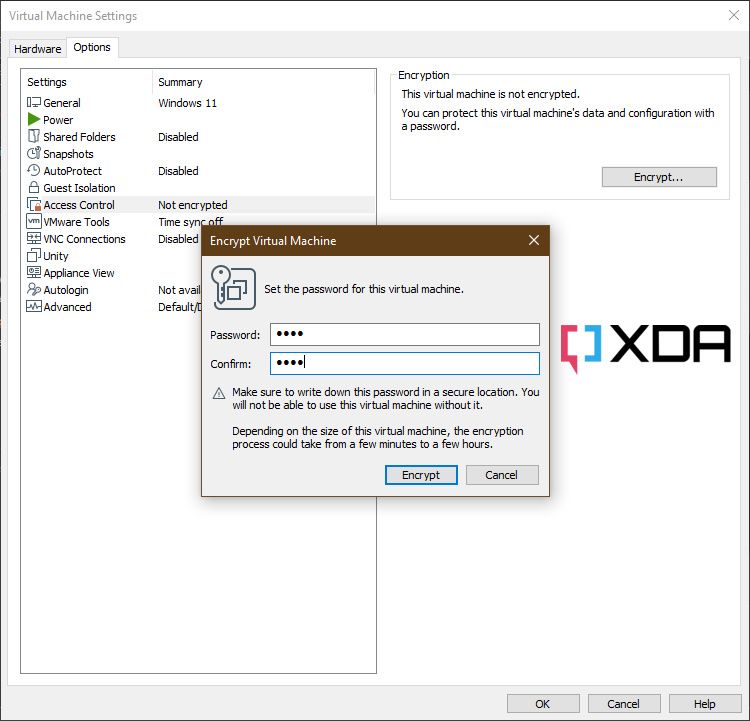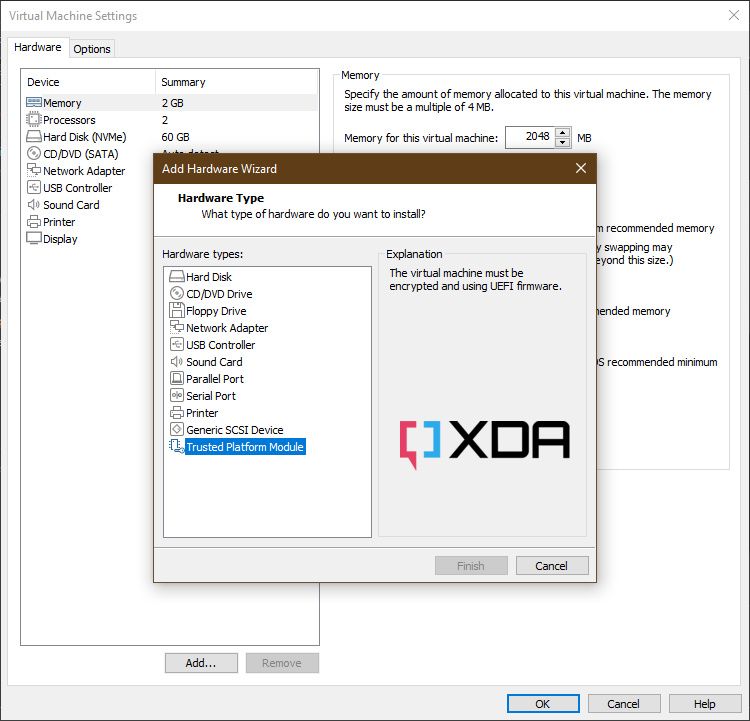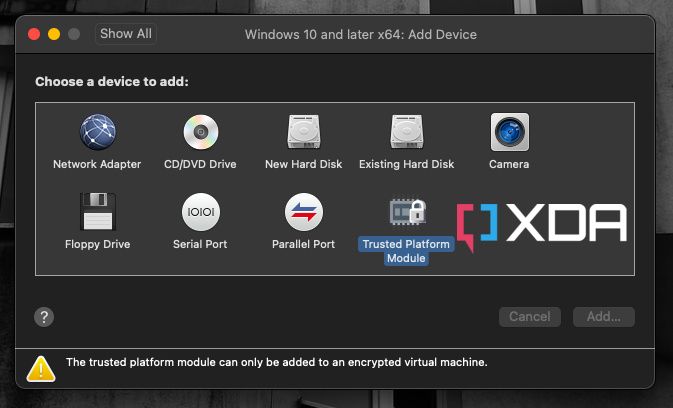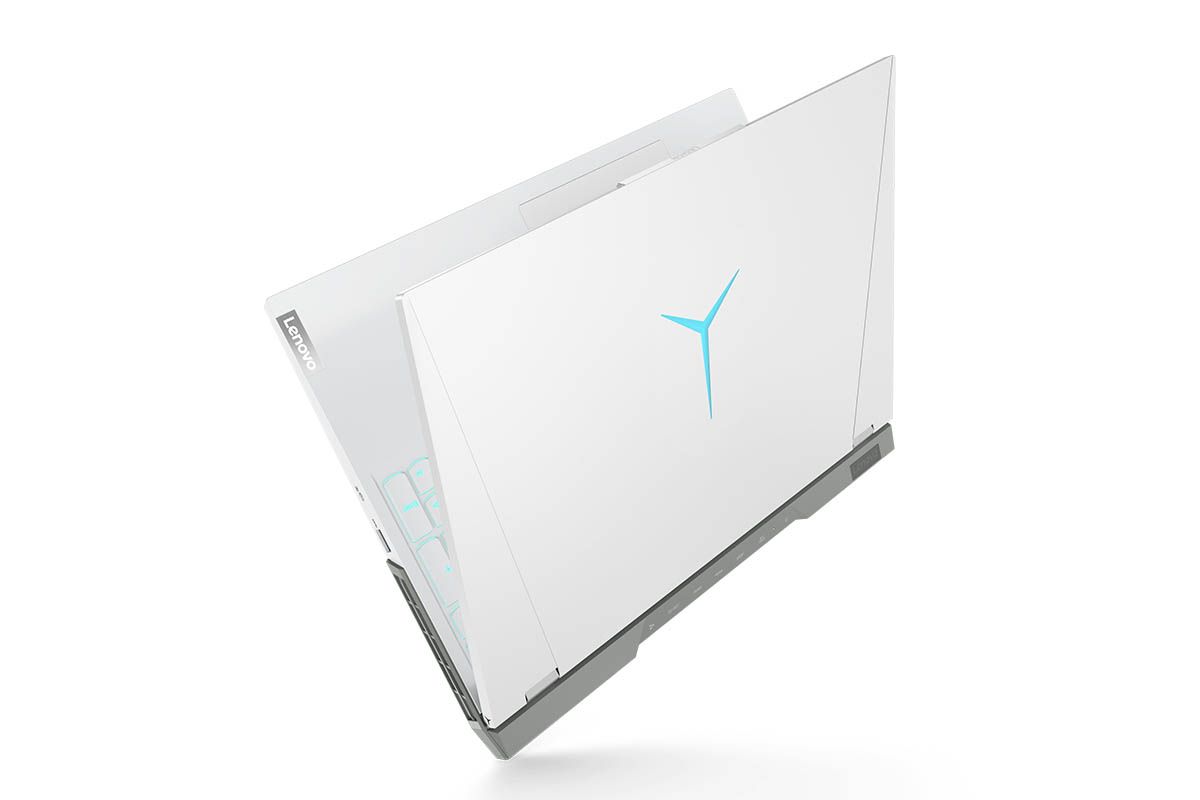Many modern computers and laptops have ditched the good ol’ optical drives. The advent of online streaming services and the ability to download content on the go have rendered these optical drives redundant for most users. That being said, there’s still a good chunk of people who carry around a library of movies and music. It’s safe to say that the physical drives still have many takers. In this article, we’ll be taking a look at some of the best optical drives you can buy on the market right now.
From compact and affordable units to powerful and featured-packed drives, we’ve managed to put together a collection of some of the best optical drives on the market for you to use. Whether you’re an enthusiast looking for a powerful Blu-ray drive or an average Joe looking for a basic CD/DVD burner, we’ve got some solid recommendations for you. So, let’s get started:
Navigate this article:
- Best overall optical drive: ASUS BW-16D1X-U Blu-ray Drive
- Best budget optical drive: LG GP65NB60 external drive
- Best Blu-ray burner: Pioneer BDR-XS06
- Best DVD burner: ASUS ZenDrive
- Best for storage formats: LG WP50NB40
- Best optical drive for Mac: Pioneer BDR-XU03
Best overall optical drive: ASUS BW-16D1X-U Blu-ray Drive

If you’re in the market to buy an optical drive in 2022, then let it be the ASUS BW-16D1X-U Blu-ray drive. This featured-packed optical drive offers a long list of features and it manages to do so without burning a huge hold in your pockets. The ASUS BW-16D1X-U is our pick for the best overall optical drive you can buy on the market right now. One of the first things you notice about this drive is that it’s got a modern design. A lot of these optical drives tend to reflect their age-old design, but the ASUS unit we picked here is different.
The drive, as you can see, comes with a matte black and glossy surface on the top. There’s also a cool LED indicator that lights up when the drive is active. The ASUS BW-16D1X-U Blu-ray drive measures 9.5” x 6.5” x 2.2”, so it’s not the most portable option on the market. That being said, it’s still better than a lot of other drives out there. This Blu-ray burner offers a Plug and Play design. All you have to do is simply connect the drive to your computer and it starts to work. The drive also includes a copy of the software too, but it doesn’t seem to work on macOS. The drive still works with macOS, so you’ll have to rely on some other software to get the most usage out of it.
When it comes to compatibility, the ASUS BW-16D1X-U Blu-ray drive supports just about any Blu-ray, DVD, and CD format. It also supports M-discs, which are designed for long-term archiving. ASUS claims that it can last for up to 1000 years, which is quite promising, at say least. If you’re someone who’s into archiving or likes to take plenty of backups, then this might be the drive for you. There’s no support for Ultra Blu-ray discs, though. It’s not necessarily a deal-breaker, but definitely, something to make a note of.
The ASUS BW-16D1X-U is also a performant drive, meaning it offers really good read and writes speeds. The performance is also quite reliable in terms of quality. The extracted files turned out great and there were issues whatsoever. The supporting software on Windows is also very reliable in terms of functionality. That being said, there’s no shortage of supporting software on the market. You can use a bunch of them from Power2Go to NeroBackItUp to extract or backup files. A lot of this software also has an encryption function to secure your data. Additionally, ASUS also provides a free six-month subscription to their cloud storage system with the BW-16D1X-U.
All things considered, we think the ASUS BW-16D1X-U is a solid option to consider for $120. The pricing is on-par with most Blu-ray drives but this one happens to offer good value for money with all the important features on deck. Other options like the OWC Mercury Pro External USB 3.1 Gen 1 Optical Drive are also worth considering if you don’t mind spending a little more.
- The ASUS BW-16D1X-U is a reliable Blu-ray optical drive that offers a good set of features at a relatively affordable price.
|
Features: |
|
|
|
Pros: Cons: |
Second best overall optical drive: OWC Mercury Pro

The OWC Mercury Pro External optical drive is also a solid option to consider. We think it’s just as good as the ASUS BW-16D1X-U-drive, if not better. This one, however, happens to be slightly expensive. One of the things you’ll notice about the OWC Mercury Pro External optical drive is its rugged, durable look. Unlike the ASUS BW-16D1X-U drive that we saw earlier, this one comes in a matte aluminum enclosure. We like the industrial look and feel of the drive and the build quality also appears to be quite sturdy.
In terms of the IO, the OWC Mercury Pro external drive sports a USB 3.0 slot, a DC input, a power switch, and a Kensington security slot. The OWC Mercury Pro drive is tray loading, which means the drive tray slides out for the Blu-ray discs. Tray loading drives are different from the one in which you have a center spindle onto which you have to press the Blu-ray discs. Tray loading is much easier to use and there are fewer chances of you breaking or corrupting your discs.
The OWC Mercury Pro External optical drive is compatible with almost all major formats out there. This includes M-Disc, which is essentially an archival quality disc format that lasts longer than any other standard out there. Most Blu-ray drives aren’t compatible with these long-lasting discs. The OWC Mercury Pro External optical drive supports it in a great fashion, that too right out of the box with both macOS and Windows.
The OWC Mercury drive is also second to none when it comes to the overall performance of the drive. Both extracting and copying files to the discs are blazingly fast. It tends to get a little noisy during the process, but the result is simply stunning. We think the OWC Mercury drive is the one to get if you tend to burn a lot of Blu-rays. It’s also very reliable and easy to use. All you have to do is use the USB cable to connect it to your computer, and you should be good to go. Everything works as intended with almost little to no errors.
The OWC Mercury is priced slightly higher than the ASUS BW-16D1X-U but we think it’s a good option to consider if you use Blu-ray more often, especially Blu-ray burning. The only thing we don’t quite like about the OWC Mercury drive is its plain and simple design. Sure, optical drives don’t have to be fancy, but it doesn’t hurt to make your unit look good. It’s also not the most portable drive on the market, which means it may be difficult to carry the drive with you at all times.
But if you don’t mind the issues we just highlighted about its design or the portability factor, then this is perhaps one of the best options on the market right now. It also supports USB 3.1 Gen 1, so that’s worth considering too. A great option overall for reliable performance at a great price.
- The OWC Mercury external drive is one of the most reliable external optical drives you can buy on the market right now.
|
Features: |
|
|
|
Pros: Cons: |
Best budget optical drive: LG GP65NB60 external drive

While it’s good to have the ability to work with Blu-ray discs, we understand that not everyone needs a Blu-ray disc drive. As good as the blu-ray drives are, they tend to run a little expensive than the standard ones that only support CD/DVDs. Well, if you’re somebody who doesn’t need the Blu-ray capabilities, then you might want to check out the LG GP65NB60. This particular optical drive is available for just $50 on Amazon right now, and it’s our pick for the optical drive you can buy on the market right now.
The LG GP65NB60, as you can see, has a low-profile design. Despite being an affordable drive, we think the LG GP65BN60 looks the best out of the bunch. The low-profile design makes it extremely portable, meaning you can carry it easily. The LG GP65BN60 is small enough to fit into your backpack. It only measures 0.6 x 5.4 x 5.6 inches and weighs just 0.4 pounds. This is easily our pick when it comes to portability.
The LG GP65BN60 ultra-slim optical drive is also compatible with a variety of standards. it can both read and write different types of disc formats including CD/DVD, DVD+R, RW DVD-R, RW DVD-RAM, and more. This particular drive also supports M-discs for backup and archival processes, making it a great option for those who like to collect data or media files. The M-disc uses a patent rock-like recording surface instead of organic dye to etch the data onto the disc. M-Discs are usually proven to outlast the existing DVDs/CDs on the market.
The LG GP56BN60 is also reliable when it comes to the overall performance of the drive. It can read CD ROM at 24x speeds and DVD ROM at 8x speeds. The drive, as you can see, isn’t lagging behind the competition despite the affordable price tag. The write speeds of the drive are also decent. The LG GP65BN60 can write with up to 24x in CD-R and up to 8x on DVD-R. It may not be the fastest drive on the market, but it’s still commendable and very reliable for the price. One of the best things about this particular drive from LG is that it only demands a single USB connection. This is for both the drive power as well as the data transfer needs.
It also supports Windows and Mac, making it another solid option for mac users. A lot of optical drives on the market are targeted at Windows users, but not this. And the fact that it can also burn archival-quality M-discs makes it a very good optical drive option to consider, especially at this price. It’s safe to say that the LG GP65BN60 offers almost all the importance you’d expect from a modern optical drive on the market. The only thing that’s missing here is the ability to read/write Blu-ray discs. That’s not necessarily a deal-breaker for those who don’t want a Blu-ray-compatible drive. The LG GP65BN60 is also available in black and white color options, so pick the one that suits your setup.
- The OWC Mercury external drive is one of the most reliable external optical drives you can buy on the market right now.
|
Features: |
|
|
|
Pros: Cons: |
Alternate best budget pick: Dell DW316 USB DVD Drive

The Dell DW316 USB DVD Drive is another solid option to consider if you’re looking for a simple and easy-to-use optical drive on the market. Just like the LG GP65BN60 drive, the Dell unit doesn’t support blu-ray. That being said, it’s a great option if you only need something to handle your CD/DVD needs. The Dell DW316 measures just 0.55 x 5.41 x 5.67 inches, which means it’s also just as portable as the LG option we saw earlier. We always recommend picking up a portable drive over the chonky unit mainly due to the portability factor. You can connect and use these drives with just a USB connector, so why not pick up something that’s portable.
The Dell DW316 also weighs a hair less than 200 grams. It can easily fit into your backpack and you won’t even notice it. The Dell DW316, as we mentioned earlier, runs off of just. USB connector. That’s all you need for both powering the unit as well as for data transfer, so it really doesn’t take all that much to get this thing up and running. The Dell DW316 officially comes with support for Windows, but it’s known to work with Mac computers too. You may need a dongle or a supported adapter to use it with new MacBooks, though.
This particular drive from Dell comes pre-loaded with CyberLink Media Suite that lets you easily connect the drive and explore all the available options for the drive. You can use it to burn DVDs/CDs or even rip some data off the discs. You may have to download a third-party app to get the drive working with macOS since there’s no official support for the same.
The overall performance of the Dell DW316 is also comparable to that of a lot of other drives on the market right now. For $20, the Dell DW316 ends up scoring just as much or even better than a lot of other expensive drives on the market. The LG GP65BN60, for one, is a good alternative and solid comparison. According to Dell, the DW316 drive boasts a maximum read speed of up to 24x for CDs and 8x for DVDs. The LG GP65BN60 drive, in comparison, offers the same read speeds of up to 24x for CDs and 8x for DVDs. The write speeds for the Dell DW316 are also the same, which is once again on par with other options.
The Dell DW316 is also known for making less noise under load. This is something that’s not usually seen on many optical drives, so that’s good. Dell is offering a 1-year warranty for the DW316 drive in case something goes wrong. It’s also worth pointing out that the Dell DW316 offers tray loading for discs, which is known to be better and more reliable than the top spindle loading drives. All things considered, we think the DW316 is a pretty good option to consider if you’re in the market to buy an affordable and reliable optical drive.
- The Dell DW316 optical drive is yet another affordable option on the market that offers reliable performance for the price.
|
Features: |
|
|
|
Pros: Cons: |
Best Blu-ray burner: Pioneer BDR-XS06

A lot of people consider buying an optical drive mainly because of the Blu-ray support. DVDs and CDs are also compatible with most of the drives, but the Blu-ray is what gets the most attention. If you’re in the market to buy a new Blu-ray compatible optical drive, then we think the Pioneer BDR-XS06 is worth considering. The Pioneer BDR-XS06 is a slot-loading Blu-ray burner that comes with the solid build quality and a long list of features.
The Pioneer BDR-XS06, as you can see, carries a shiny silver shell that looks better than a lot of these black-colored optical drives on the market. This also happens to have a solid construction that inspires confidence while handling the drive. It’s crucial for an optical drive to have solid construction, especially when you’re looking at a relatively thin form factor. The drive only measures 5.3″ X 0.7″ X 5.3″ and weighs 289 grams making it a very compact option to consider. The Pioneer BDR-XS06 sports a USB 3.0 micro-B and a port for a DC power input.
One thing that’s worth highlighting here is that the optical drive doesn’t come with a power cable. That’s right, you only get a micro USB to USB A cord to connect this thing to a computer. This isn’t necessarily a deal-breaker since you only need the micro USB cable to get it up and running. the Pioneer BDR-XS06 works well with both Windows as well as Mac computers, so it shouldn’t be an issue with working with this drive. The drive also comes with its own installation software, which is good. This particular drive offers the best plug-n-play experiences in the optical drive space. A lot of other drives don’t offer either the software files or they work with macOS natively. None of that seems to be an issue with the Pioneer BDR-XS06.
The Pioneer BDR-XS06 supports read speeds of up to 24x for CD-R and up to 8x for DVD-R. The same is the case for the write speeds too. These speeds, as you can already tell, are very similar to some drives we saw in this collection. Another thing that’s worth pointing out is the fact that the Pioneer BDR-XS06 drive slows down its read and write speeds. It does that to keep the noise level low while playing those media files. The speed picks up again when it reads data discs. This particular drive is known to get a little loud, so keep that in mind. We’re glad that it least slows down automatically while playing media files, though.
All in all, we think the Pioneer BDR-XS06 is a solid option to consider if you want a drive that supports Blu-ray. It delivers strong performance and portability, that too at an MSRP of just $120. The pricing is on par with a lot of other drives in its category, but we’d pick the Pioneer BDR-XS06 for its solid build quality and low-profile design. You can hit the link below to get the best price online for this particular drive right now.
- The Pioneer BDR-XS06 optical drive is one of the options on the market for those who're looking to buy a Blu-ray drive.
|
Features: |
|
|
|
Pros: Cons: |
Best DVD burner: ASUS ZenDrive

The ASUS ZenDrive is yet another reliable option that pops up while discussing optical DVD/CD drives. This one, however, doesn’t support Blu-ray, so you’ll have to pick from some of the other options that we’ve mentioned in this collection. Despite that, we think the ASUS ZenDrive is a quality pick. As such, it’s our pick for the best DVD burner you can buy on the market right now.
The fact that the ASUS ZenDrive doesn’t come with support for Blu-ray makes it one of the cheapest options on the market. For under $50, you’re getting a high-quality drive with an amazing build quality and a lot of other great features. The ASUS ZenDrive, in case you’re wondering, only measures 0.55 x 5.33 x 5.61 inches. This is one of the most compact drives on the market right now. We recommend picking up a compact drive over the bigger ones mainly due to the portability, and this one fits the boat rather perfectly.
The ASUS ZenDrive, unlike a lot of other optical drives on the market, only requires a single USB connector. it’ll handle both power and data transfer for the drive. It makes the drive very easy to use without having to carry around a bunch of cables to get it up and running. The ZenDrive is only available in black color option, but we think it looks pretty good and has a very good quality.
The ZenDrive is a very reliable optical drive and we think it performs well for its size. The ASUS ZenDrive offers impressive read and write speeds of up to 24x for CDs and 8x for DVDs, respectively. These speeds, in case you’re wondering, are on par with most other optical drives on the market right now. In fact, the ZenDrive trades blows with a lot of other premium drives we’ve mentioned in this collection. Additionally, the ZenDrive can also access CD and DVD content in just 160ms.
Another thing that’s worth making mentioning is that the ZenDrive supports burning to M-Disc. This feature isn’t supported by a lot of optical drives in comparison, so that’s a good addition. Being able to burn to M-Disc makes the ZenDrive a good option for those who’re looking to create long-lasting archival data that can last up to 1000 years. Another reason why we recommend picking up the ASUS ZenDrive is that it supports both Windows and macOS. The drive comes with CyberLink software to help you get started — be it storing content on discs or extracting them.
ASUS also offers six months of free cloud storage with the ZenDrive, which is another bonus feature that’s exclusive to this optical drive. Overall, we think the ASUS ZenDrive is one of the best optical drives on the market right now. It’s a fantastic option to consider if you’re looking to burn or rip DVDs and CDs, and Blu-ray isn’t a necessity for you. You can hit the link below to find the best price for the ASUS ZenDrive on the market right now.
- The ASUS ZenDrive is one of the best optical drives on the market if you only want something to rip or burn DVDs/CDs.
|
Features: |
|
|
|
Pros: Cons: |
Best for storage formats: LG WP50NB40

LG has some of the best optical drives on the market. We’ve already added the LG GP65NB60 optical drive to the list as our pick for the best budget drive. It’s a potent drive with a low-profile design that offers a good set of features at an affordable price. We’re also adding the LG WP50NB40 drive to the list as our pick for the drive for storage formats. This particular drive supports a variety of different storage formats. You want support for both Blu-ray as well as DVD? No problem. Want support for M-Discs? No problem either.
The LG WP50NB40, as you can see, also has a slim profile. In fact, this is one of the few optical drives on the market that’s as slim as it is and also supports a variety of different formats. This particular drive is just 2-inches thick, making it one of the most portable drives around. The overall measurements are also small enough to fit inside a small backpack. It’s only available in black-color option, but it’s we think it looks good and has a solid build quality.
The LG WP50NB40 isn’t the fastest when it comes to the write speeds, though. That being said, it makes it up by supporting a wide variety of formats, as we mentioned earlier. You can also use this Blu-ray drive to urn archival or high-capacity discs. It supports both M-Disc and BDXL discs, which is impressive by itself. M-discs, in case you don’t know, are archival media formats and BDXL discs are high-capacity Blu-ray formats. BDXL discs are capable of holding several times the data that can be stored inside a standard Blu-ray disc.
This is probably one of the very few discs on the market that supports these many storage formats. Sure, it’s going to be a little slower than a lot of other drives on the market, but we’d trade that to get support for these many formats. When it comes to speed, the LG WP50NB40 supports Blu-ray write speeds of up to 6x and Blu-ray read speeds of up to 6x. It’s not too slow by any means, but there are faster drives on the market.
Another thing that’s worth pointing out is the fact that it requires two USB connections. You’ll need one for your computer and the other one for a power supply. This isn’t necessarily a deal-breaker, but a lot of other drives only demand one connection. This could potentially make it a little tricky to work with, especially when you’re on the move. The included cables are short in length, so we suggest you pick longer cables to use with this drive.
The LG WP50NB40 works well with both Windows as well as macOS, so you shouldn’t have any issues getting it up and running. We think the LG WP50NB40 is a solid option to consider if you care about working with a variety of different data formats. You can hit the link below to find the best price for this drive on the market right now.
- The LG WP50NB40 optical drive is good for those who're looking to buy a drive that supports a variety of different storage formats.
|
Features: |
|
|
|
Pros: Cons: |
Best optical drive for Mac: Pioneer BDR-XU03

A lot of the optical drives we mentioned in the list have pretty good designs. Not a lot of manufacturers are making any new optical drives on the market, so there’s not a lot to expect in terms of the design. That being said, we do have one last recommendation for you. The Pioneer BDR-XU03 is probably one of the best-looking optical drives on the market right now. This drive also happens to be the only one in the list that’s compatible with just the Apple Mac computers. That’s right, Windows users will have to look elsewhere because this one only supports the Mac computers.
The Pioneer BDR-XU03, as you can see reflects the sleek aesthetics of Apple devices with its design. This is also a slim drive that comes with a low-profile design. The Pioneer BDR-XU03 only measures 5.2 x 0.8 x 5.2 inches and weighs about 220 grams. The Pioneer BDR-XU03 sports a magnesium body and it comes with a stand. This is the only optical drive in this collection that comes with a stand, and it can be kept in a vertical orientation. Being able to orient the drive vertically makes it even more compact.
Besides that, the Pioneer BDR-XU03 also supports a variety of different formats. The Pioneer BDR-XU03 supports BDXL disc format too, which means you can use this drive to burn or extract high-capacity data. The drive also comes with support for a few intelligent playback modes including PowerRead, PureRead2+, and Auto Quiet mode. All these features come together for a unique all-around experience.
The PowerRead and PowerRead2+ allow the drive to provide smoother playback when it comes to music and other media files such as movies. The Auto Quiet mode, as the name suggests, automatically reduces the overall noise output of the drive by lowering the read and write speeds while playing media files. The Auto Quiet mode feature is something that we also saw with the Pioneer BDR-XS06 optical drive. Pioneer is known for making some quality media playback devices on the market, and these features perfectly reflect the company’s focus in that space.
As for the read and write speeds, the Pioneer BDR-XU03 offers Blu-ray write speeds of 6x and Blu-ray read speeds of 6x. These speeds are more in-line with a lot of other drives on the market, so that’s good. All things considered, we think the Pioneer BDR-XU03 is a very good optical drive for Mac users. The fact that it’s not available for Windows users is a bummer mainly because this drive offers plenty of useful features.
It also happens to be one of the best-looking optical drives on this list. That being said, there’s no shortage of optical drives for Windows. However, that’s not the case with macOS. In fact, the selection of reliable optical drives for macOS is rather slim. Besides that, there are other drives in the collection that supports both the operating systems. You can hit the link below to find the best price for the Pioneer BDR-XU03 in the market right now.
- The Pioneer BDR-XU03 is the only optical drive in this list that's exclusively compatible with Mac computers.
|
Features: |
|
|
|
Pros: Cons: |
Best optical drives to buy: Final Thoughts
Modern computers may be ditching these optical drives, but there’s clearly a lot of them still alive and kicking. Using an optical drive is your only option if you have decades’ worth of CDs, DVDs, or Blu-rays to watch or archive. We think the ASUS BW-16D1X-U Blu-ray Drive is one of the best optical drives to consider right now. The Dell Dell DW316 USB DVD Drive is also worth considering if you don’t mind giving up support for Blu-ray for a cheaper drive. Those who want to explore different storage formats should definitely buy the LG WP50NB40.
Well, that wraps up our collection of the best optical drives you can buy right now. You’ll definitely need a PC to use these optical drives as they connect via a USB connector to the computer to work. If you’re building a new PC then consider checking out some of our collection articles including the best PC cases list that has solid PC case options from Corsair, NZXT, and more. You can also check out our other collection like the best m.2 SSD to find some good storage options to locally store the data extracted from the discs. Lastly, we also encourage you to join our XDA Computing Forums to discuss and get more product recommendations from our expert community.
The post These are the best optical drives you can buy in 2022 appeared first on xda-developers.
from xda-developers https://ift.tt/3Joxlzp
via IFTTT















